Click below to listen to my 2 min. Garden Bite radio show/podcast: Assessing wildlife damage on plants
The weather was warm enough to start shoveling out the 4 ft. pile next to my back door to melt!
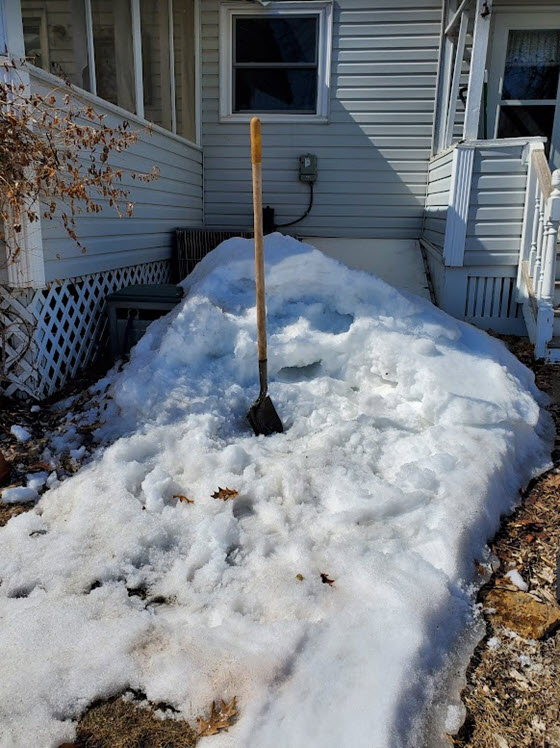
I’m now wearing a brace on my elbow. BOY that stuff was frozen! And then…
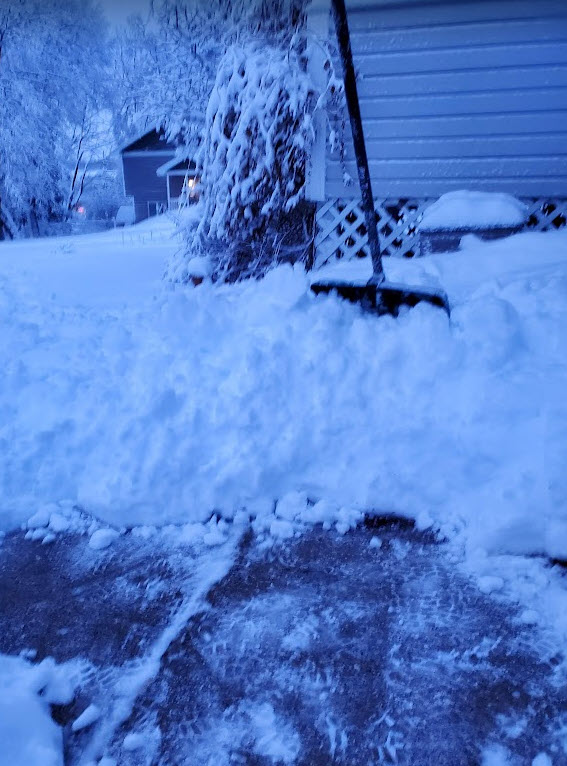
I’ve been continuing to tread lightly in my gardens but I DID see life!
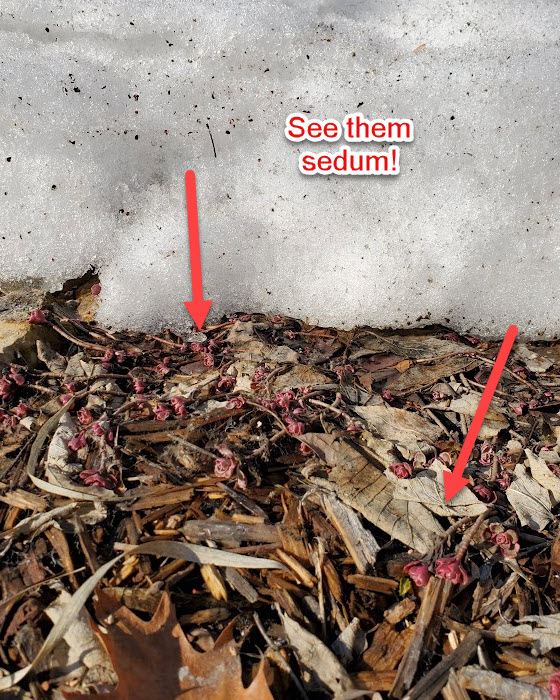
Have you been assessing wildlife damage? I have damage on nearly all my shrubs and even some perennials.

Rabbits, voles and squirrels can all strip bark. They may also leave small tooth marks on the wood. University of Minnesota Extension wildlife specialist, John Loegering, says if the bark is stripped all the way around a branch, that branch will probably not survive.
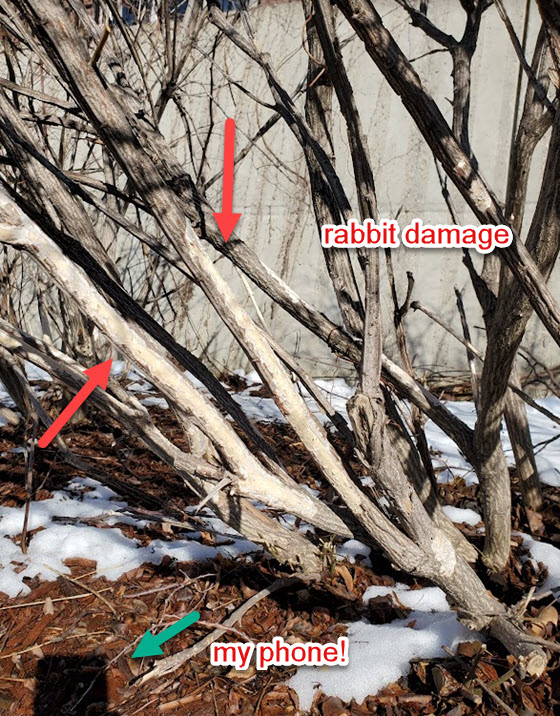
Prune off the damaged part. The healthy portion below it is still likely to produce new leaves and shoots from the buds. When a small mammal chews on a branch or trunk, they “girdle” it. Girdling partially cuts off the transport of water and nutrients from the roots to the canopy.
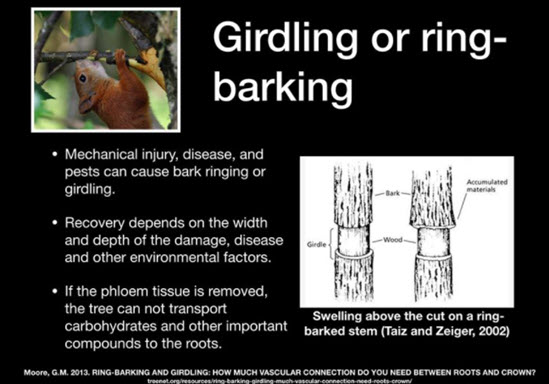
Girdled branches likely won’t survive for long. Bite wounds also allow pathogens into the wood, introducing diseases like black rot.
If the tooth marks look like a scoop from a spoon, they are likely from a rabbit. If the mark looks like it was scraped with the tines of a fork, it is likely from a vole.
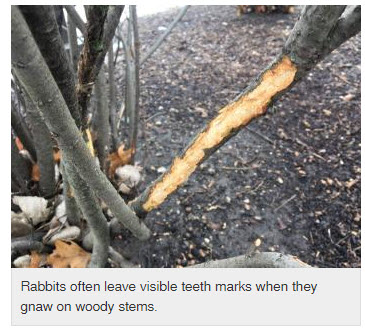
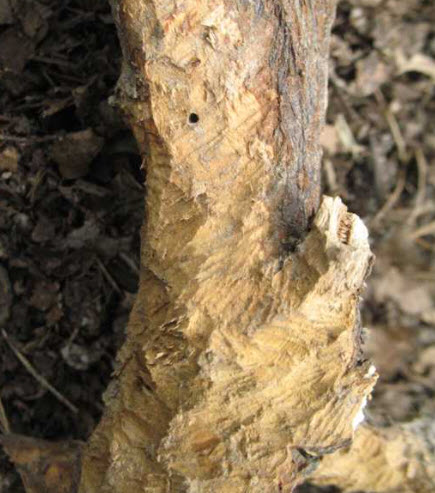
There’s really not much else you can do. It is unnecessary to apply wound dressing. It just costs money and does nothing.
Adding fertilizer will only help if the soil actually needs it, which means you may want to get a soil test. And excess nitrogen can reduce fruit load in favor of vegetative growth and leach out of the soil into our lakes and rivers.
